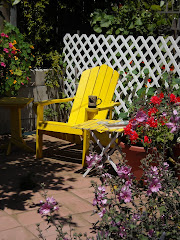If you’re looking for something more substantial than just a “summer read,” but something so well written and so compelling you can’t put it down? Try, “Empire of the Summer Moon; Quanah Parker and the Rise and Fall of the Comanches, the Most Powerful Indian Tribe in American History,” by S.C. Gwynne.
Sounds like a snoozer, you say? Not a bit of it. The writing is superb and the story is compellingly, masterfully told, in part because Mr. Gwynne doesn’t fall into the “Dances with Wolves” trap of sentimentality. Comanches were a savage, brutal warrior culture that lived on the buffalo and lived for the joy of raiding and killing neighboring tribes and stealing their horses (Comanche wealth and tribal status depended on the number of horses one had, not to mention the number of scalps taken.) They enjoyed killing and took great delight in torturing their victims. They often captured and kept their opponent’s young children to raise as their own (or later marry) or kept them as slaves. They gave no quarter to anyone and expected none for themselves. They were the finest horsemen the world has ever seen.
And that extraordinary skill, plus the remarkable western mustang, gave them the ability to strike deep into enemy territory then disappear back into the trackless plains. As a result, they were absolute rulers of the southern buffalo plains from Kansas down through the high plains of the west Texas Llano Estacado, to the fertile hill country near Austin, and down into New Mexico and northern Mexico. The Comancheria was their domain, nobody entered it without deadly risk, and anybody foolish enough to live near its border (and own cows and horses) was always at risk. The term “Comanche Moon” was no romantic Hollywood notion. Their war parties covered vast distances at night and on the frontier a full moon was not a time for romance and wonder; it was a time for sick dread, bolted doors and nightmare fear. And by such tactics, they stopped the westward movement of Americans in a bloody 40-year-old guerilla war.
They also loved their families, went to extraordinary lengths to protect them when attacked, and grieved terribly when they were killed. And killed they were, meeting often equally brutal settlers, savage Texas Rangers, and revenge-fueled Army units. Both sides in this brutal war of attrition were equally duplicitous, often equally savage and equally uncomprehending of the other’s reality.
Then came the buffalo hunters, who for both economic reasons and with support of Washington Policy that understood that a buffalo culture couldn’t survive without the buffalo, wiped the plains clean of the great beasts. And then sealed their fate as a culture at the hands of Captain Ranald Slidell Mackenzie (who Gwyne refers to as “the anti-Custer”) under orders to take the fight to the heart of the Comancheria to carry out the policy of pacification that was, in effect, the final solution.
Into this history, in the last dying years, came Cynthia Ann Parker, captured as a child, raised by and later married to Chief Peta Nocona, she gave birth to three children, one of them, Quanah Parker, who would later become famous as a leader of the last battles of the dying Comanche nation. Cynthia, re-captured as an adult and returned to her white family, spent many of her last years trying to escape and return to the plains. In her was to be found the American trope of the “White Squaw,” a theme of miscegenation, “savage” sexuality, and titillating incomprehension layered over with romantic nonsense. Add in her “half-breed” son, a tall, handsome, skilled warrior and you have the stuff of American legend.
Like all stories of the meeting of indigenous cultures with more technically advanced ones, this one is ultimately a tragedy. But, in the case of the Comanches, one with a terrible irony: Being a brutal raiding warrior culture resulted in making blood enemies among the surrounding tribes. When the whites came, there was no end of equally skilled Indians to serve as trackers and scouts and guides for the Army. The movies have often portrayed these Indians as “traitors” to their own kind. It was nothing of the sort. It was payback. And it ultimately proved to be permanently lethal.
And ultimately elegiac: “Who was she, in the end? A white woman by birth, yes, but also a relic of old Comancheria, of the fading empire of high grass and fat summer moons and buffalo herds that blackened the horizon. She had seen all of that death and glory. She had been a chief’s wife. She had lived free on the high infinite plains as her adopted race had in the very last place in the North American continent where anyone would ever live or run free. She had died in deep pine woods where there was no horizon, where you could see nothing at all. The woods were just a prison. As far as we know, she died without the slightest comprehension of what larger forces had conspired to take her away from her old life
“One thinks of Cynthia Ann on the immensity of the plains, a small figure in buckskin bending to her chores by a diamond-clear stream. It is late autumn, the end of warring and buffalo hunting. Above her looms a single cottonwood tree, gone bright yellow in the season, its leaves and branches framing a deep blue sky. Maybe she lifts her head to see the children and dogs playing in the prairie grass and, beyond them, the coils of smoke rising into a gathering twilight from a hundred lodge fires. And maybe she thinks, just for a moment, that all is right in the world.”
Tuesday, August 03, 2010
Subscribe to:
Post Comments (Atom)












7 comments:
Hmnn. Gonna have to give that one a read, but one thing kinda sticks in my mind about the whole noble horsemaster thing.
Horses came from Europe with the Spaniards, there is no such thing as a "wild" mustang, They are no more "wild" in the sense of indigenous populations than Star Thistle or for that matter, Mustard weed.
Feral, yes, wild, no.
The Comanches simply took an advanced weaponry and made it their own, sound familiar?
Anyway thanks for the report, going to read this one for sure.
Mike, you won't be disappointed. It's a beautiful read. And, yeah, feral horses would be more correct, I guess. Though the term "wild" becomes useful versus "tame" maybe(already broken?) horses? Also, the mustang must have "devolved" from the variety of Spanish horses that were brought here -- huge "cold-blooded" war horses and Arab mix "hot bloods" left to their own devices "devolved" into the "primitive," "aboriginal" generic "mustangy" "horse" -- a Darwinian type that could survive in the West. Also suspect the Indians likely did primitive breeding of their own, selecting for speed and endurance & etc. Sorta like purebred dogs left to their own devices "devolve" into a "primitive, aboriginal" dog type (the sort that can be seen roaming around garbage dumps in third world countries.)Anyway, you will love this book. It's terriffic!
It is interesting these days to read someone referring to Indians as "savages". Usually they are shown to be victims of western civilization. Of course, when the earlier French and Indian wars erupted with massacres of settler women and children, the fate of all red savages was set.
I got to read this book!
Why does the Obama administration and their ilk not refer to the Islamic extremists who kill women, children, and innocent others as "savages"?
Jon, It's just semantics, the new savages are the terrorist.
New boss same as the old boss.
Specator: I hope you will read the book. Gwyne is very clear and evenhanded in discussion of how various Tribes behaved to other tribes before Europeans ever arrived and equally fair about the brutality of the Americans towards native peoples as well. The "Dances with Wolves" trap is to portray the "Nobel Savage." Native Americans were humans who did what humans always do: guard resources, advance their own group's welfare and if that means raiding and killing The Other Guy to get his resources for himself, that's what they did. Just like Europeans did. Just like we do (The Mexican American "War" was no different from a giant Comanche raiding party to claim more land for our Empire. And consider the PNAC plan vis a vis Iraq and its Oil?) Gwyne also makes clear, the terrible irony that while Americans were portraying the Comanche as brutal "savages," they themselves were committing mass killing (civil war) on a scale that simply beggered what Comanches had done with their generations-long raiding parties. If you want to know who the real savages were, you only had to take a look at the battlefield after Shiloh. That made Comanches look like absolute pikers.
As for Obama calling terrorists who kill women and children, "savages," be careful: In Afghanistan and Iraq, American soldiers have killed women and children and called them "collateral damage."
Sounds like an insightful read. Not available in town or at Nobles, so I ordered one locally .
By the way, "Born To Run" was an interesting, can't put it down read. Lots of "things I never know before". Thanks for the tip.
Mike ......With respect to modern horses.
According to my 23 year old horse-dicted granddaughter, who enlightened me about the origin of today's horses, North America was the original home of the horse species.
She said they thrived here over 57 million years ago before becoming extinct, for various reasons. Fortunately before they became extinct, about 13,000 years ago they migrated to Asia, then into Europe and North Africa.
That was surprising to me, so I checked it out and sure enough the diverse species presumably returned to North America by crossing the Bering land bridge.
It is an interesting irony that the horse originated here, migrated to Asia, Europe and North America, was "developed" into a useful technological tool, with enormous variations (huge cold-blooded war horses, huge carting/plow horses and later hot-blooded Arab horses for speed,etc.) and then were brought back in their new forms to America to transform another culture (the Plains indians) and help tame and settle a new continent. Pretty amazing.
And FogSwamp, you won't be disappointed in "Empire" I even wrote a "fan letter" to the author yesterday, thanking him for writing such a great book.
Post a Comment